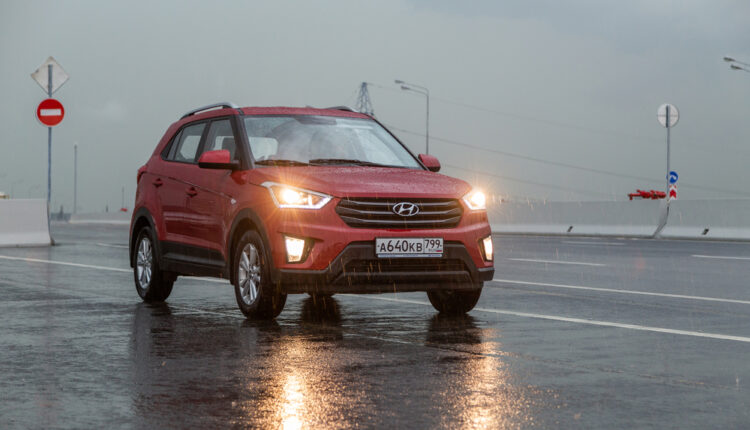8 Safety Tips for Driving in Rain in the UAE
Rain is a rare sight in the UAE, but when it rains, motorists find it challenging to drive on wet roads. It is best to take precautionary measures to drive safely during the rain. You should know helpful tips for driving in the rain to drive safely on slippery roads, especially if you experience unpredictable weather in the middle of your trip.
Driving in heavy rain can be dangerous, as it causes hydroplaning. Such conditions make it hard to drive on slippery roads with a lack of visibility. In this blog, we will share some insightful tips that will help you drive safely in unsafe weather conditions.
Reduce Speed
If you encounter heavy rainfall during your travel, it is advisable to reduce the speed of your vehicle instead of rushing through the road. Ensure that you maintain a safe distance between your car and the vehicle ahead of you. Though driving slowly during the rain may cause a delay in reaching your destination, it is better to be safe than sorry. Remember, “Better Late than Never.” Additionally, avoid puddles on the road for safety precautions.
Use the Windscreen Wipers
Use the vehicle’s windscreen wipers in heavy rain to ensure clear visibility of the road ahead. Turn on the wipers and adjust their speed to work in heavy rain. Adjusting at maximum speed will provide a clear view of the road, improving visibility.
Use Headlights
Driving during rain can disrupt clear sight even in broad daylight. Therefore, it is crucial to use headlights to improve poor visibility. Make sure to turn on both headlights and taillights to increase your visibility and that of other drivers. Doing so will significantly help make your car noticeable to other drivers, ensuring everyone’s safety on the road.
Keep Your Car Ventilated
When it rains, the humidity rises, and fog can build up on your car’s windscreen. To prevent this, it’s essential to keep your vehicle well-ventilated. Most cars have a ventilation system that can be turned on while driving, or you can simply roll down the windows a little bit to allow some fresh air in. Doing so will help clear any fog and improve your visibility.
Use Indicators
It is crucial to use indicators when changing lanes during rainy weather, as they make your car visible to other drivers. However, it is not advisable to turn on hazard lights while driving. You can use them when your vehicle is stationary at the side of the road.
Pullover to the Side
When it’s raining heavily, and you find it hard to control your vehicle, it’s best to pull over to the side of the road and wait until the situation improves. In addition, in some cases, you may experience thunderstorms along with heavy rainfall, which can make it even more challenging to handle your vehicle. Therefore, it’s highly recommended to pull over as it could pose a severe risk to both your life and your car.
Prepare Your Car for Rainfall
It is essential to prepare your vehicle for extreme weather conditions by periodically checking the tires, brakes, and wiper blades.
Check Tires
It is essential to ensure that your car’s tires are in good condition to avoid the risk of aquaplaning. Aquaplaning occurs when you drive a vehicle on roads covered in rainwater. The accumulation of water forces the tires to lose traction, causing them to take longer to apply the brakes and accelerate, which can lead to collisions. To avoid this, make sure that your tires are properly maintained. In severe situations, it is best to pull your car to the side.
Check Brakes
Wet roads make it hard for brakes to work. It takes extra effort to apply the brakes when stopping the vehicle. Therefore, it is crucial to properly check your car’s braking system to avoid skids on slippery roads.
Check Wiper Blades
As mentioned above, turning the windscreen wipers on is crucial to ensure better visibility. Therefore, make sure that your vehicle wiper blades are in adequate working condition and avoid the chances of collisions.
Avoid Driving during Heavy Rainfall
We advise you to avoid driving in heavy rainfall unless it is necessary. If you have any plans, it is better to reschedule them, as risking your life is not worth any inconvenience. Only in case of an emergency should you drive, but make sure to follow these essential tips for driving safely in the rain and on wet and slippery roads. Additionally, if you are already on the road and feel that the weather is unsafe, it is best to pull over and wait for the rain to slow down before continuing your journey.
Conclusion
It is crucial to keep safe driving practices in Dubai in mind to ensure safe and secure driving. Although rain is not a common occurrence in the UAE, it is still important to be ready for such situations and become a vigilant driver by exercising caution and following the driving tips mentioned above.
For more informative blogs like this, follow our ArabWheels blog page and keep getting updated.

